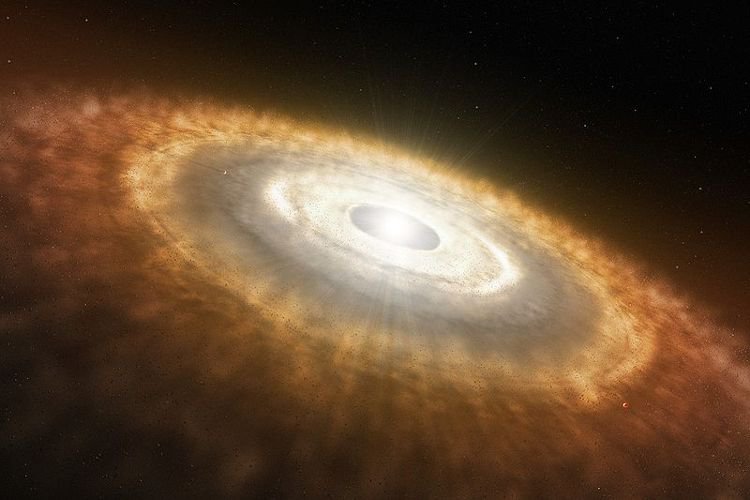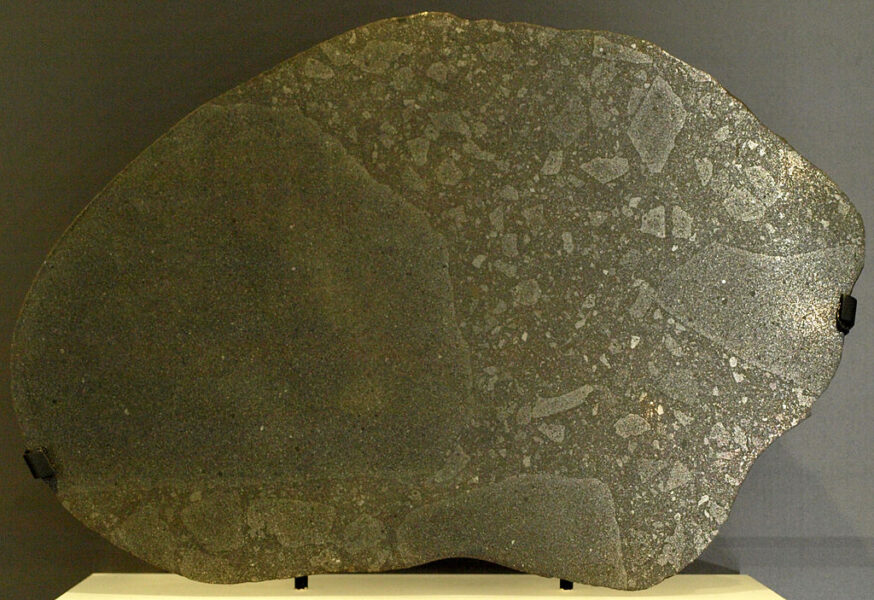Scientists have discovered a new candidate source for Earth’s water: building blocks known as enstatite chondrites.

ESO / L. Calçada
We may finally have found the missing source of most of Earth's water in a rare class of meteorites called enstatite chondrites. These are remnants of the part of the protoplanetary disk from which the terrestrial planets formed. Their composition resembles Earth's, but they had been thought too dry to supply water.
Now, an analysis of the most pristine samples known shows that the original population might have supplied enough water to more than fill the oceans, Laurette Piani (University of Lorraine, France) and colleagues report in Science.
Earth and the other terrestrial planets came together out of the solar nebula in a region thought to be too close to the young Sun for water to condense. Instead, water would have condensed beyond the snow line of the young solar system, out near Jupiter. If that were the case, delivering water to Earth in the early years of the solar system required a roundabout route.
The leading candidate for water delivery had been carbonaceous chondrite asteroids — rocky leftovers of the protoplanetary disk. Such asteroids formed beyond Jupiter and so would have been rich in carbon and water. But the material in those asteroids fails a crucial fingerprint test. To see if the water on Earth is the same as the water on asteroids, astronomers compare isotopes. Every atom of hydrogen, for example, has the same number of electrons and protons, but some have more neutrons than others. Based on the isotopic composition of hydrogen, oxygen, and other elements, scientists concluded that asteroids’ water and rocky materials do not match terrestrial ones. Much of the water and other materials must have come from other sources.
Another Water-carrying Candidate

Wikimedia Commons / CC BY 3.0
Enstatite chondrites formed in the first million years of the solar system, close to the Sun in an environment rich in gaseous carbon and oxygen compounds. Previous studies have found that isotopic ratios of a number of elements — including oxygen, calcium, titanium, neodymium, chromium, nickel, molybdenum, and ruthenium — are almost indistinguishable between these particular asteroids and Earth and the Moon.
"We consider [enstatite chondrites] the best analog we have for the Earth's building blocks," says Piani.
Piani’s team collected and analyzed 13 samples of rare enstatite meteorites, finding traces of water that could have been accreted into the young Earth. Water accounted for 0.08% to 0.5% of the analyzed meteorites, but Piani says the highest values are the most relevant ones, because they came from the meteorites showing the fewest signs of alteration since their formation. That 0.5% concentration is far short of carbonaceous chondrite meteorites, whichh hold up to 10% of their mass in water. But Piani points out that surface oceans account for only 0.02% of the Earth's mass, and total water only about 0.2%.
The enstatite meteorites found on Earth are the only samples we have of the primordial enstatite chondrites that formed near the sun. If those objects formed most of the building blocks of Earth, they easily could have provided most terrestrial water, says Piani. Her group proposes enstatite chondrites supplied all the water in the mantle and 95% of that in the oceans, with the rest coming from wet asteroids.
Finding the new water source means "we do not need to invoke complicated, unlikely dynamical models of bringing water-rich asteroids from the outer solar system to supply Earth with water," says Anne Peslier (NASA Johnson Space Flight Center), who wrote an accompanying perspective piece in Science. "Water was simply acquired like most other materials when the planet formed from accretion of dust in the inner solar nebula."
The new evidence suggests Earth grew from building blocks that were wet or at least damp, with some later contributions from other sources. One question that remains is how the original water came to be in rocks that formed close to the Sun at low pressure. In theory, it should have evaporated under those conditions. To find out, Piani's group plans a new series of experiments to study more of the hydrogen-bearing material in the meteorites and investigate its behavior as well as that of other volatiles that may have been present in the early solar system.
 0
0









Comments
You must be logged in to post a comment.